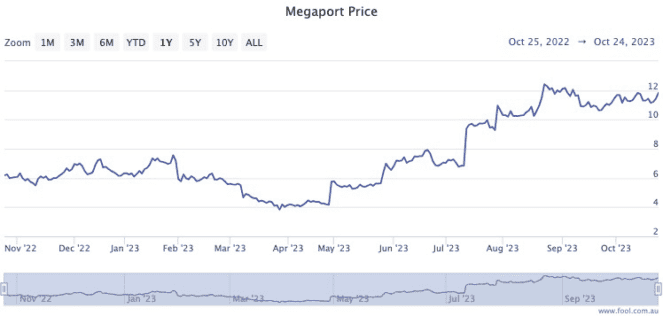The Megaport Ltd (ASX: MP1) share price is in freefall on Thursday morning after its latest quarterly update was released.
In early trade the stock had dropped $1.88 from the Wednesday closing price of $11.51, equating to a shocking 16.3% loss.
The virtual networking technology provider had released a business update before market open, which may have triggered the panic selling.
Let's check out what the report said:
'Rebuild and recovery of momentum will take time'
Like many in the tech sector, over the past year Megaport has been working on transforming from a cash-burning business to one that pays its way.
The September quarter update showed that the company is on its way, with record earnings and positive cash flow:
- EBITDA of $15 million, up $14 million year on year
- Cash flow from operating activities at positive $10.7 million
- Revenue of $46.5 million, up 5% from previous quarter
- Record annual recurring revenue of $189.8 million, up 5% from previous quarter

Megaport chief executive Michael Reid said that the first quarter of this financial year has "set the tone".
"While the rebuild and recovery of momentum will take time, our investment in go-to-market strategies, increased sales headcount, network enhancements, and the introduction of new products underscore our dedication to delivering exceptional value for our customers and propelling our Annual Recurring Revenue growth."
US tech enters correction territory
So with seemingly positive results, why were investors running from Megaport shares like it was a burning building?
One possible reason is that they were disappointed with customer growth.
The company only raised total services by 2% from the June quarter, while net new customer ports only saw an increase of 1%.
A second driver could be that tech stocks were sold off heavily in the US overnight.
With a painful 2.43% drop for the day, Nasdaq Composite Index (NASDAQ: .IXIC) entered correction territory.
The index, which is dominated by technology stocks, has now lost more than 10.6% since the end of July, which exceeds the correction threshold of a 10% loss.









